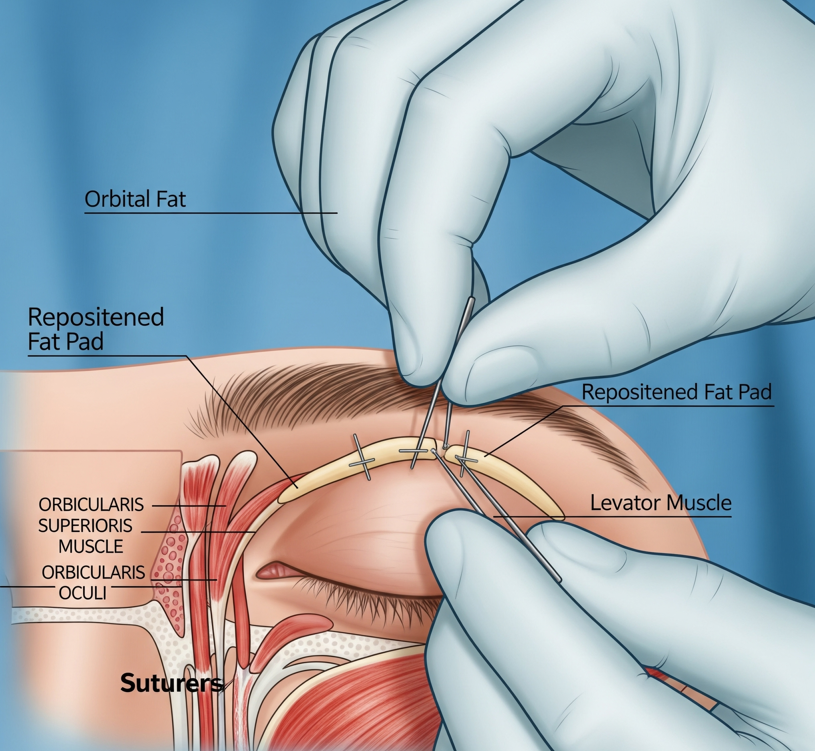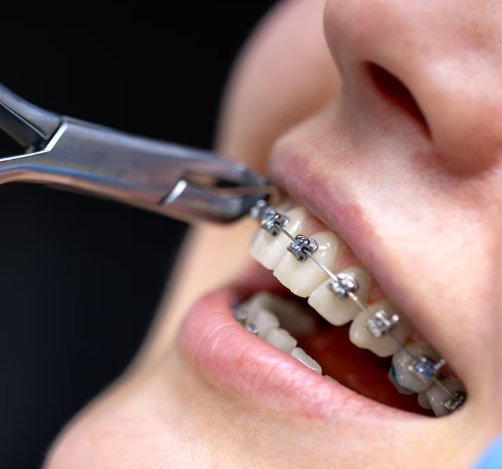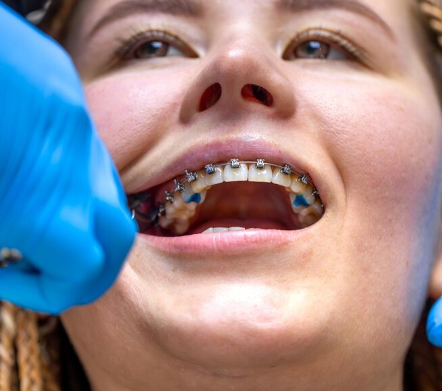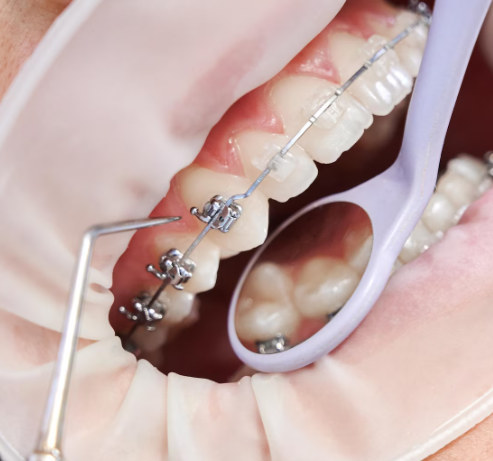Upper eyelid fat repositioning is a surgical technique performed to correct hollowness, asymmetry, and a prematurely aged look around the eyes. Unlike traditional blepharoplasty, which focuses mainly on fat removal, this procedure carefully repositions and redistributes existing fat in the upper eyelid area. The goal is to restore natural fullness, improve contour, and prevent the sunken or hollowed appearance that can sometimes occur after simple fat excision.
This advanced method is increasingly popular in modern oculoplastic and aesthetic surgery because it emphasizes preservation rather than removal, helping patients achieve more youthful and natural-looking results.
Purpose & Benefits
- Restores natural fullness in the upper eyelid area
- Corrects hollow or sunken upper eyelids
- Prevents an overly “skeletonized” or aged look from fat removal alone
- Improves contour between eyelid and brow
- Enhances harmony between upper eyelid and midface
- Provides longer-lasting and more natural outcomes compared to traditional fat removal techniques
Ideal Candidates
- Patients with hollow or sunken upper eyelids due to aging or genetics
- Individuals with asymmetry or contour irregularities in the upper eyelid area
- Those undergoing upper blepharoplasty who want volume preservation rather than excessive fat removal
- People in good overall health with realistic expectations
- Patients seeking a natural, youthful appearance instead of a “done” look
Possible Risks & Complications
As with any surgical procedure, there are potential risks, though they are minimized with skilled surgeons:
- Temporary swelling, bruising, or mild discomfort
- Asymmetry or uneven fat distribution
- Over- or under-correction of volume
- Rare complications such as infection, scarring, or eyelid function issues
Surgical Techniques Used
Upper eyelid fat repositioning is typically performed during upper blepharoplasty or as a standalone procedure:
- Fat Preservation Method: Instead of removing fat pads, the surgeon repositions them to fill hollow areas.
- Transpalpebral Approach: Incision is hidden in the natural eyelid crease for minimal scarring.
- Fat Redistribution: Fat is gently shifted and secured to achieve smoother contour.
- Combination with Fat Grafting: In some cases, small amounts of patient’s own fat are grafted to enhance results.
- Customized Aesthetic Design: Technique varies depending on patient’s eye anatomy, age, and desired outcome.
Recovery & Aftercare
- Swelling and bruising may last 1–2 weeks
- Stitches (if used) are usually removed within 5–7 days
- Cold compresses and prescribed medications help manage discomfort
- Avoid heavy exercise, bending, or rubbing eyes during early recovery
- Most patients return to daily activities within 1–2 weeks
- Final results are visible after swelling subsides, typically in 1–3 months
Results & Longevity
- Natural fullness and youthful contour of the upper eyelid
- No hollow or skeletonized appearance
- Long-lasting results, typically 7–10 years or more
- Improves overall eye harmony and softens signs of aging
- Results are permanent in terms of fat repositioning, though natural aging continues over time
Treatment Process in Korea
Korea has become a top destination for upper eyelid fat repositioning because of its advanced surgical techniques and focus on natural beauty. Korean plastic surgeons emphasize volume preservation and youthful aesthetics, avoiding the overly hollow or artificial look sometimes seen with aggressive fat removal.
Why Korea is leading in this field:
- Volume-Preservation Approach: Korean surgeons prioritize repositioning over removal.
- Minimally Invasive Techniques: Incisions are hidden in the natural crease, minimizing scars.
- Advanced Technology: 3D imaging and facial analysis for surgical planning.
- Combination Procedures: Often paired with upper blepharoplasty, brow lift, or fat grafting for optimal results.
- Customized Results: Tailored to suit different eyelid shapes, particularly for Asian and international patients.
- International Reputation: Many foreign patients travel to Seoul for natural, youthful eye surgeries.
Cost Range in Korea
The price of upper eyelid fat repositioning in Korea depends on the clinic, surgeon expertise, and whether it is combined with other procedures like blepharoplasty:
- Standalone Upper Eyelid Fat Repositioning: ₩1,500,000 – ₩3,000,000 KRW ($1,100 – $2,300 USD)
- With Upper Blepharoplasty (Combined Procedure): ₩2,500,000 – ₩5,000,000 KRW ($1,900 – $3,800 USD)
- Premium Clinics with Top Surgeons: ₩4,000,000 – ₩6,000,000 KRW ($3,000 – $4,500 USD)
Many clinics also offer package options that include aftercare, anesthesia, and combination eye surgeries for more comprehensive rejuvenation.
Popular Clinics in Korea
- Banobagi Plastic Surgery Clinic – Known for natural upper eyelid fat preservation and advanced blepharoplasty.
- ID Hospital – Offers customized eye rejuvenation combining repositioning with eyelid reshaping.
- Dream Medical Group – Specializes in anti-aging eyelid surgeries using fat-preserving techniques.
- Regen Plastic Surgery – Focuses on delicate eye contour surgeries for international patients.
- View Plastic Surgery Clinic – Popular for natural-looking and long-lasting eyelid rejuvenation.




